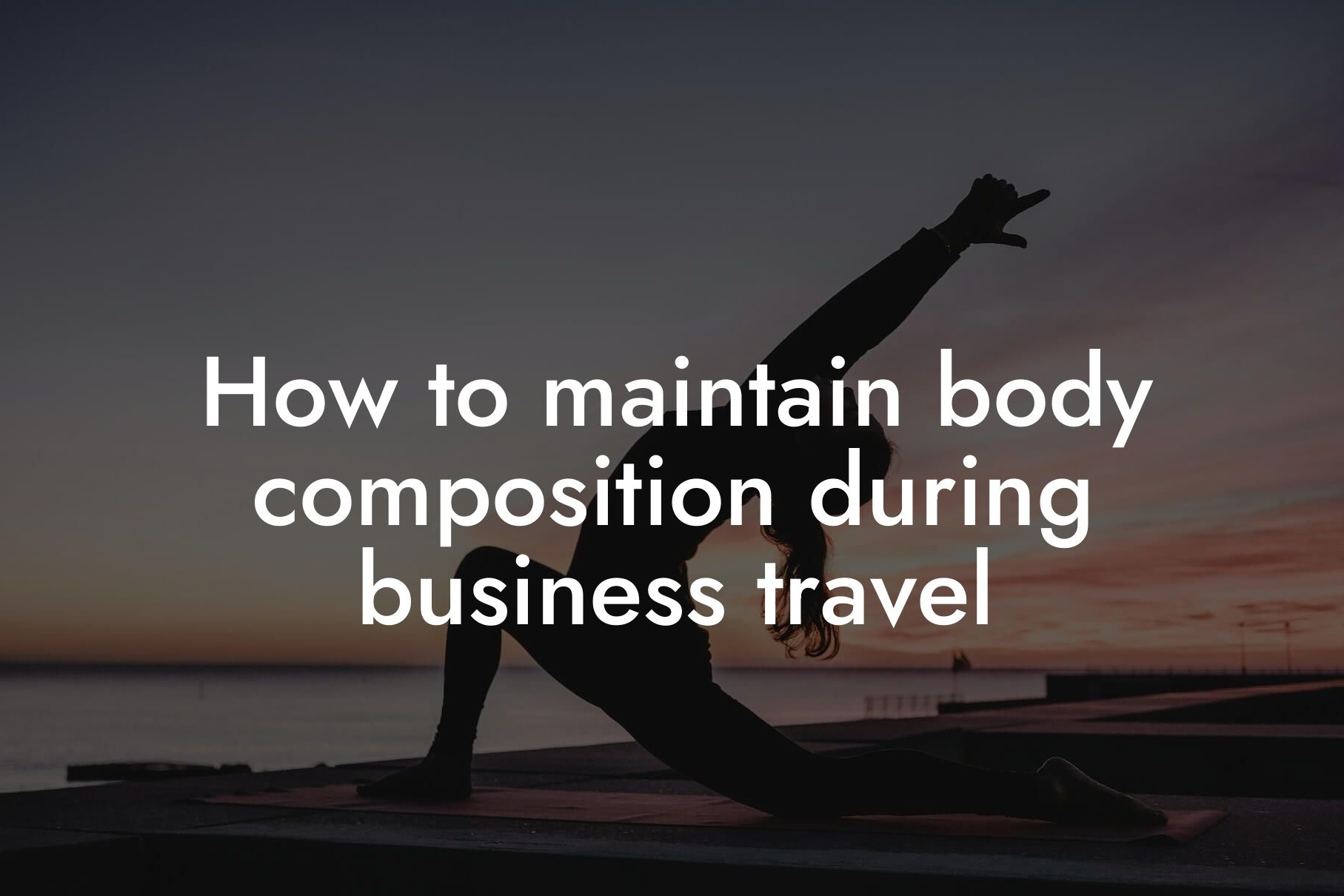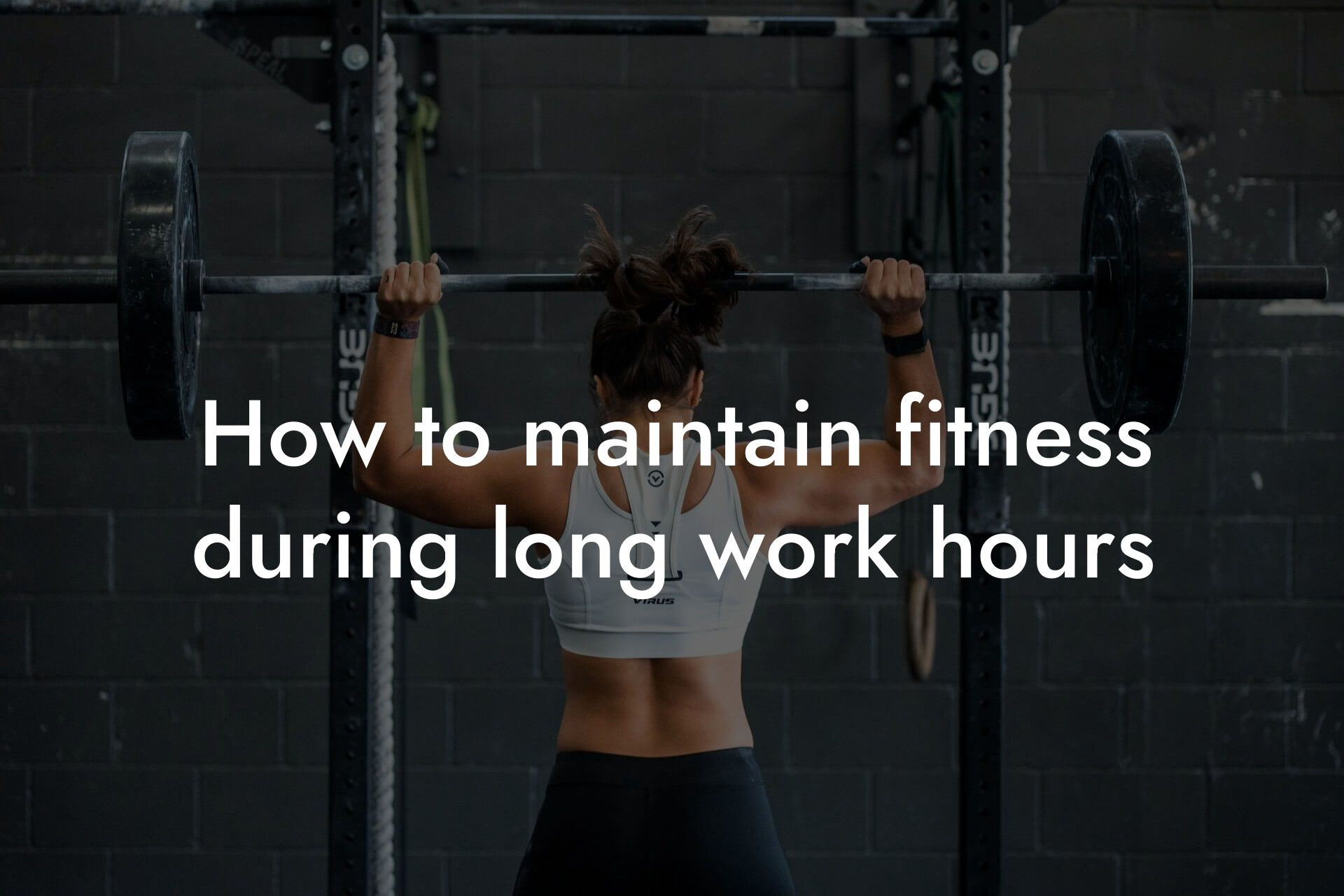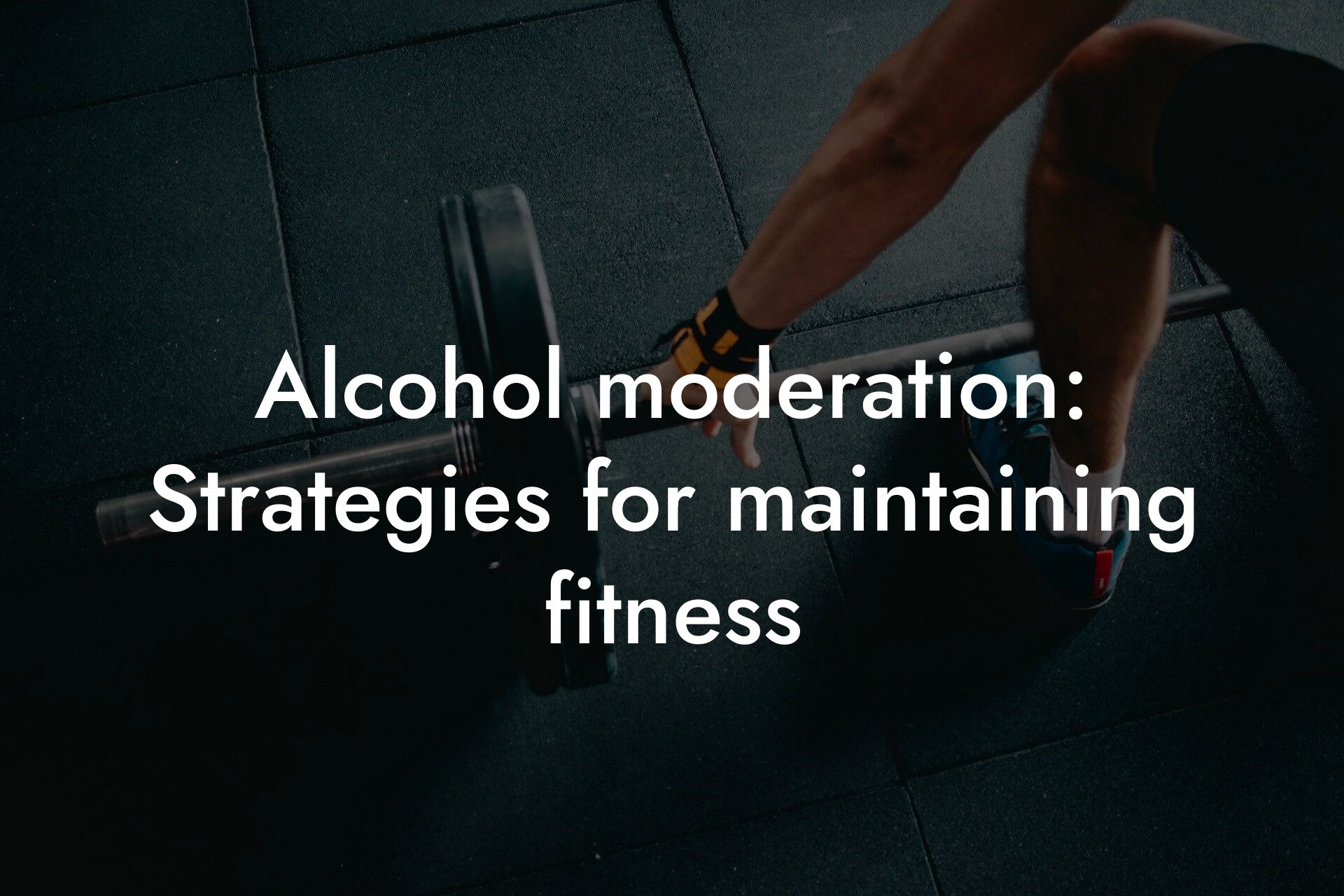As a busy professional, finding time to prioritize your physical fitness can be a challenge. Between long work hours, meetings, and other commitments, it's easy to let exercise fall by the wayside. However, neglecting your physical health can have serious consequences on your overall well-being and productivity. One solution to this problem is to build a home gym, providing you with a convenient and efficient way to stay active and healthy, even on the most hectic of days.
Table of Contents
Benefits of a Home Gym for Busy Professionals
Having a home gym offers numerous benefits, particularly for busy professionals. Firstly, it saves time and eliminates the need to commute to a commercial gym, allowing you to fit in a workout during even the most compact of schedules. Secondly, a home gym provides privacy and comfort, enabling you to exercise in a setting that suits you best. Additionally, a home gym can be tailored to your specific fitness goals and needs, ensuring you're targeting the areas that matter most to you.
Essential Equipment for a Home Gym
When it comes to building a home gym, it's essential to invest in equipment that is versatile, space-efficient, and effective. Some must-haves include:
- Adjustable dumbbells: These allow for a full-body workout, targeting multiple muscle groups simultaneously.
- Resistance bands: Lightweight, portable, and inexpensive, resistance bands provide an excellent workout for strength training and flexibility.
- Folding bench or exercise mat: A comfortable and versatile surface for exercises like push-ups, dumbbell presses, and yoga.
- Jump rope: A cardio-intensive tool that's easy to use and stores compactly.
- Kettlebells: Similar to dumbbells, kettlebells offer a range of exercises for strength training and cardio.
- Pull-up bar: Install a pull-up bar in your home gym to target your back, shoulders, and arms.
Designing Your Home Gym Space
When designing your home gym, consider the following factors:
- Space: Measure your available space and plan your equipment layout accordingly. A well-organized space will help you stay focused and motivated.
- Lighting: Ensure your home gym is well-lit, with natural light being the best option. If this isn't possible, invest in high-quality LED lighting.
- Ventilation: A well-ventilated space is crucial for a comfortable workout. Install a fan or ensure good airflow to keep you cool and refreshed.
- Flooring: Invest in a high-quality, shock-absorbing floor mat to reduce noise and provide comfort during exercises.
Creating a Workout Routine for Busy Professionals
As a busy professional, it's essential to create a workout routine that is efficient, effective, and adaptable to your schedule. Consider the following tips:
- Start small: Begin with short, 20-30 minute workouts, and gradually increase duration and intensity as you become more comfortable.
- Focus on compound exercises: Exercises like squats, deadlifts, and bench presses target multiple muscle groups simultaneously, saving you time and energy.
- Incorporate HIIT (High-Intensity Interval Training): HIIT involves short bursts of intense exercise followed by brief periods of rest. This type of training is excellent for busy professionals, as it can be completed in a short amount of time and provides an excellent cardio workout.
- Schedule it in: Treat your workouts as non-negotiable appointments, ensuring you prioritize your physical fitness alongside your professional commitments.
Tracking Progress and Staying Motivated
To ensure you stay motivated and on track with your fitness goals, consider the following:
- Invest in a fitness tracker or smartwatch: These devices provide valuable insights into your progress, including heart rate, calories burned, and distance covered.
- Take progress photos: Regularly take photos of yourself to track visual progress and stay motivated.
- Set realistic goals: Break down larger goals into smaller, achievable milestones, providing a sense of accomplishment and motivation.
- Find a workout buddy: Having someone to hold you accountable and share the experience with can be a great motivator.
Integrating Your Home Gym with DEXA Scanning
At Tano Performance Group, we understand the importance of tracking progress and making data-driven decisions. That's why we recommend integrating your home gym with DEXA scanning. Our state-of-the-art DEXA machine provides a comprehensive body assessment, offering valuable insights into your body composition, bone density, and muscle mass. By combining your home gym workouts with regular DEXA scans, you'll be able to:
- Track changes in body composition and muscle mass
- Monitor bone density and make adjustments to your workout routine accordingly
- Identify areas for improvement and adjust your workout routine to target specific muscle groups
- Make data-driven decisions to optimize your workout routine and achieve your fitness goals
Building a home gym as a busy professional is a wise investment in your physical and mental well-being. By incorporating essential equipment, designing a functional space, creating an efficient workout routine, and tracking progress, you'll be well on your way to achieving your fitness goals. Remember to integrate your home gym with DEXA scanning to take your fitness journey to the next level. With dedication and persistence, you can maintain a healthy, active lifestyle, even on the most demanding of schedules.
Frequently Asked Questions
What is the ideal space requirement for a home gym?
When it comes to building a home gym, space is often a concern for busy professionals. The good news is that you don't need a massive space to get started. A compact area of around 100-200 square feet can be sufficient for a basic setup. However, if you're planning to invest in more equipment, you may need to consider a larger space. Ultimately, the key is to optimize your space to ensure a functional and efficient workout area.
What are the must-have equipment for a home gym?
As a busy professional, you want to make the most out of your workout time. The essential equipment for a home gym includes a adjustable dumbbell set, a resistance band, a pull-up bar, a exercise mat, and a cardio machine such as a treadmill or stationary bike. These pieces will provide a solid foundation for a full-body workout and can be adapted to various fitness levels.
Can I build a home gym on a budget?
Absolutely! Building a home gym doesn't have to break the bank. You can start with affordable and versatile equipment like resistance bands and dumbbells. Additionally, consider purchasing second-hand or refurbished equipment to save costs. You can also look for deals and discounts online or at local fitness stores. With a little creativity and resourcefulness, you can create an effective home gym on a budget.
How do I choose the right exercise equipment for my fitness goals?
When selecting exercise equipment, it's essential to consider your fitness goals and preferences. For example, if you're looking to build strength, focus on equipment that targets multiple muscle groups at once, such as a home gym system or a set of dumbbells. If you're looking to improve cardiovascular health, consider investing in a cardio machine like a treadmill or stationary bike. Be honest about your goals and preferences, and choose equipment that aligns with your needs.
What are some space-saving ideas for a home gym?
As a busy professional, you may not have a lot of space to dedicate to a home gym. Fear not! There are plenty of space-saving ideas to help you optimize your workout area. Consider investing in compact equipment like foldable exercise bikes or wall-mounted pull-up bars. You can also use stackable weights or resistance bands that take up minimal space. Get creative with your layout, and don't be afraid to think outside the box (or in this case, the gym).
How often should I use my home gym?
As a busy professional, it can be challenging to find time to work out. However, consistency is key when it comes to seeing results. Aim to use your home gym at least 3-4 times a week, with a minimum of 20-30 minutes per session. Remember, every bit counts, and even a short workout is better than nothing. Be realistic about your schedule, and find a routine that works for you.
Can I use my home gym for high-intensity interval training (HIIT)?
HIIT is a great way to get a effective workout in a short amount of time, and it can be easily adapted to a home gym setting. With a combination of equipment like dumbbells, resistance bands, and a cardio machine, you can create a HIIT routine that targets various muscle groups and gets your heart rate up. Just remember to warm up properly, cool down, and listen to your body to avoid injury.
How do I stay motivated to use my home gym?
Staying motivated can be a challenge, especially when you're working out from home. To stay on track, set specific and achievable fitness goals, and track your progress. Find a workout buddy or accountability partner to keep you motivated. You can also mix up your routine to avoid boredom and prevent plateaus. Finally, reward yourself for reaching milestones, and celebrate your successes along the way.
What are some common mistakes to avoid when building a home gym?
When building a home gym, there are several common mistakes to avoid. These include not setting clear fitness goals, not investing in quality equipment, and not creating a functional workout space. Additionally, be sure to avoid overcrowding your space, and prioritize safety and ergonomics. By avoiding these common mistakes, you can create a home gym that is both effective and enjoyable.
Can I use my home gym for stretching and foam rolling?
Absolutely! In addition to strength training and cardio, your home gym can also be used for stretching and foam rolling. Invest in a high-quality exercise mat, and consider adding a foam roller or lacrosse ball to your equipment list. These tools can help improve flexibility, reduce muscle soreness, and enhance overall recovery.
How do I clean and maintain my home gym equipment?
Proper cleaning and maintenance are essential to extend the life of your home gym equipment. Regularly wipe down equipment with a disinfectant, and consider using a machine cleaner for cardio equipment. Additionally, inspect your equipment regularly for signs of wear and tear, and replace any worn-out parts as needed. By keeping your equipment clean and well-maintained, you can ensure a safe and effective workout environment.
Can I use my home gym for yoga and Pilates?
Yes, your home gym can be a great space for yoga and Pilates. Invest in a high-quality exercise mat, and consider adding props like blocks, straps, and blankets to your equipment list. You can also use equipment like resistance bands or light dumbbells to enhance your yoga or Pilates routine. Remember to focus on proper form and technique, and listen to your body to avoid injury.
How do I incorporate technology into my home gym?
Technology can be a great addition to your home gym, providing access to workout tutorials, tracking progress, and staying motivated. Consider investing in a fitness tracker, smartwatch, or fitness app that aligns with your goals and preferences. You can also use virtual training programs or online fitness classes to mix up your routine and stay engaged.
Can I use my home gym for rehabilitation and injury recovery?
Absolutely! Your home gym can be a great space for rehabilitation and injury recovery. Work with a healthcare professional or fitness expert to create a customized workout plan that addresses your specific needs and goals. Invest in equipment that is gentle on your joints, such as resistance bands or a stationary bike, and focus on low-impact exercises that promote healing and recovery.
How do I stay safe while working out at home?
Safety should always be a top priority when working out, especially when working out at home. Make sure you have a clear workout space free from obstacles, and invest in equipment that is sturdy and well-maintained. Warm up properly before each workout, and cool down afterwards to prevent injury. Additionally, listen to your body and stop if you experience any pain or discomfort.
Can I use my home gym for meditation and mindfulness?
Yes, your home gym can be a great space for meditation and mindfulness. Create a peaceful and calming environment by dimming the lights, playing soothing music, and using aromatherapy. Invest in a meditation cushion or yoga mat, and consider adding guided meditation apps or programs to your routine. Remember to focus on your breath, and let go of distractions to fully immerse yourself in the experience.
How do I measure the effectiveness of my home gym?
Measuring the effectiveness of your home gym is crucial to staying motivated and seeing results. Track your progress by taking body measurements, weight, or body fat percentage. You can also use fitness apps or trackers to monitor your workouts and progress. Additionally, take progress photos, and celebrate your successes along the way. By tracking your progress, you can stay motivated and make adjustments to your workout routine as needed.
Can I use my home gym for functional training?
Absolutely! Functional training is a great way to improve overall fitness and prepare for everyday activities. Your home gym can be used for functional training exercises like squats, lunges, and step-ups. Invest in equipment like resistance bands, dumbbells, or a pull-up bar, and focus on exercises that target multiple muscle groups at once. By incorporating functional training into your routine, you can improve balance, coordination, and overall fitness.
How do I create a workout playlist for my home gym?
Music can be a great motivator when working out, and creating a workout playlist can help you stay energized and focused. Choose music that is upbeat and energizing, and consider creating separate playlists for different types of workouts (e.g. cardio, strength training, yoga). You can also use music streaming services or fitness apps to discover new music and stay motivated.
Can I use my home gym for group fitness classes?
While a home gym is typically designed for individual use, you can definitely use it for group fitness classes. Consider hosting virtual fitness classes with friends or colleagues, or invite a personal trainer to lead a group class in your home gym. You can also use online fitness platforms or apps that offer group fitness classes and virtual training programs. By incorporating group fitness into your routine, you can stay motivated and accountable, and have fun while doing it.
How do I stay accountable with my home gym workouts?
Staying accountable is crucial to seeing results and staying motivated. Consider finding a workout buddy or accountability partner to keep you on track. You can also hire a personal trainer or fitness coach to provide guidance and support. Additionally, use fitness apps or trackers to monitor your progress, and set reminders to stay on schedule. By staying accountable, you can ensure that you're making the most of your home gym and reaching your fitness goals.
Here are some related articles you might love...
- How to maintain body composition during business travel
- How to maintain fitness during long work hours
- Alcohol moderation: Strategies for maintaining fitness
- Sustainable habits for lifelong fitness
- The role of community in achieving fitness goals
- The impact of smoking on body composition and bone health
- Weekend warrior fitness: How to stay consistent
- Balancing social life and fitness goals
- The benefits of morning workouts for professionals
Zak Faulkner
Zak Faulkner is a leading authority in the realm of physical health and body composition analysis, with over 15 years of experience helping professionals optimise their fitness and well-being. As one the experts behind Tano Performance Group, Zak has dedicated his career to providing in-depth, science-backed insights that empower clients to elevate their physical performance and overall health.
With extensive knowledge of DEXA technology, Zak specializes in delivering comprehensive body assessments that offer precise data on body fat, muscle mass, bone density, and overall physique. His expertise enables individuals to make informed decisions and achieve their fitness goals with accuracy and confidence. Zak’s approach is rooted in a deep understanding of human physiology, combined with a passion for helping clients unlock their full potential through personalised strategies.
Over the years, Zak has earned a reputation for his commitment to excellence, precision, and client-focused service. His guidance is trusted by top professionals who demand the best when it comes to their health. Whether advising on fitness programs, nutritional strategies, or long-term wellness plans, Zak Faulkner’s insights are a valuable resource for anyone serious about taking their health and fitness to the next level.
At Tano Performance Group, Zak continues to lead our Content Team revolutionising how professionals approach their physical health, offering unparalleled expertise that drives real results.




